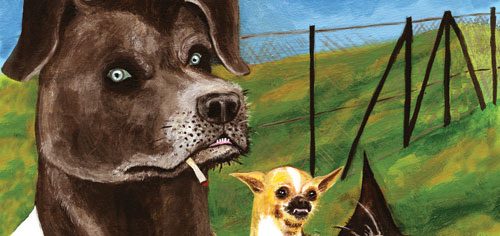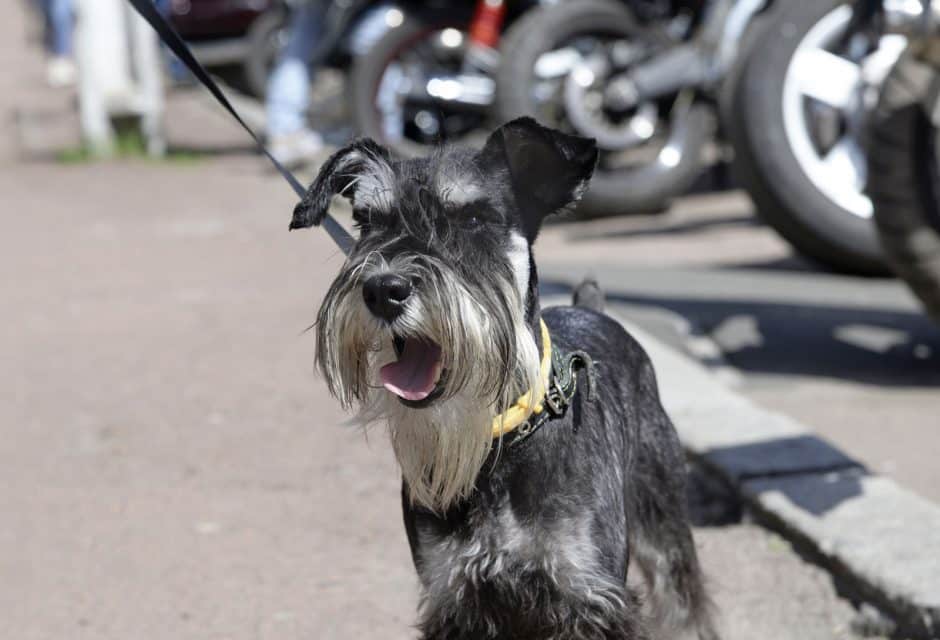

Zak George Proposes A New Approach To Dog Training
And it's based on love!

It’s no secret that Cesar Millan is under investigation for animal cruelty relating to a recent episode of his show, Cesar 911 which featured a French bulldog-terrier mix named Simon who has a history of attacking pot-bellied pigs. Needless to say, the training session went wrong, ending with the dog attacking a pig, drawing blood. It remains to be seen what will come of the investigation. I will suspend judgment on that particular incident until the investigation is closed.
However, as someone who cares passionately about the state of my industry, I think the fact that Cesar’s methods are being called into question is an important wake up call for the public. We need to make some major changes to the dog training industry as a whole.
Regardless of what happens with this case, it’s true that Cesar Millan and many other traditional dog trainers continue to advise people to use force and intimidation to train dogs, basing their methods on dominance theory which relies on discomfort, even pain sometimes, to teach. They do this despite the fact that the American Veterinary Society of Animal Behavior, the Association of Professional Dog Trainers, the Humane Society of the United States and many other of the most credible organizations in animal welfare have routinely criticized “dominance training” saying that it slows training, harms relationships between humans and dogs, and can actually cause behavioral problems.
In fact, for dogs with aggression issues, studies have shown that using forceful methods will likely make the behaviors worse. For instance, one study in the Journal of Applied Animal Behavior found that confrontational methods such as striking dogs, intimidating them, alpha rolls, and staring them down often led to an aggressive response.
Cesar Millan will frequently argue that dogs need to be taught as if they’re simply members of a wolf pack. He says we need to be our dog’s pack leaders as though dogs adhere to this type of hierarchy. The truth is there is recent and credible science that shows Millan’s hypothesis is wrong. Millan’s ideas are based on an archaic understanding of wolf behavior that wolf researchers have long-since discredited.
It turns out that wild wolves — the ones our dogs descended from — achieve “leader of the pack” status by maturing, mating and producing offspring, as one of the world’s leading wolf experts, L. David Mech explains in my upcoming book, Zak George’s Dog Training Revolution. Those leadership roles are actually parental roles, and the pack structure is much like a human family.
It concerns me that many mainstream trainers are still promoting ideas that have long been rejected by the very experts who study this topic most. Any training ideology that relies on your being a “pack leader” or an “alpha” instead of a loving parent to your dog is misguided. The fact that this myth has persisted for so long in the face of science that shows otherwise means that there is much work to do to enlighten the public.
While dogs did descend from ancient wolves, there is one very important detail Millan doesn’t seem to factor into his methods. For thousands of years, humans have specifically bred dogs to take direction from and cooperate with humans for various skills, such as herding, hunting, retrieving, or even just companionship. In other words, we purposely bred dogs to interact with us and learn from us. Focusing on the wolf ancestry rather than acknowledging the human influence in the domestic dog reflects a failure to acknowledge why the modern dog even exists at all.
So what is the answer? Real teaching is about communication, not domination. We need to treat our dogs with respect and promote a strong, loving bond with them through positive reinforcement, not punishment. As I demonstrate in every video on my YouTube channel, we need to teach our dogs to think for themselves and behave a certain way because they want to, not because we are forcing them to do so.
And what about dogs that behave aggressively sometimes? Best results come when we take time to understand the individual dog, their background if possible, their genetics, and most importantly the context of their outbursts rather than simply applying a “one size fits all” approach that can’t possibly factor in these intricate variables.
Furthermore, when one hopes to show a dog how to behave a particular way, they must control the dog’s environment and surroundings very well so that they can thoroughly teach a dog how to behave in certain situations. This is a mistake that Millan and professionals around the world who mirror his methods seem to make far too often.
I’m sure that Millan’s heart is in the right place when he works with dogs, but neither of us has the luxury of being careless when we guide people. All professional dog trainers need to collectively raise the standards in how we teach dogs by keeping up with the latest scientific and ethical advancements in our craft.
The public deserves this from us. And so do our dogs.
For more information on Zak George and his training tips head to his YouTube page.
Join the newsletter and never miss out on dog content again!
"*" indicates required fields
By clicking the arrow, you agree to our web Terms of Use and Privacy & Cookie Policy. Easy unsubscribe links are provided in every email.





